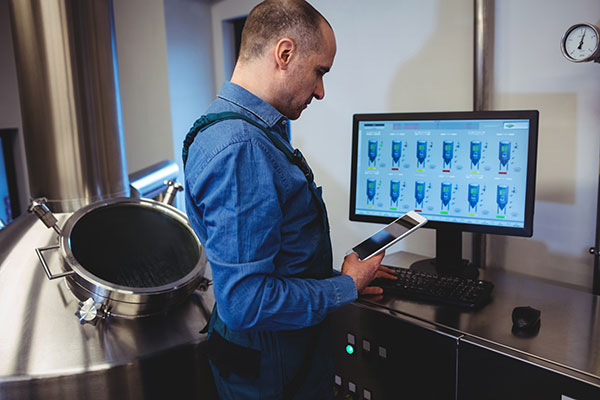When thinking about food safety, your first thought is likely safe handling and avoidance of potential contamination. However, cyberattacks pose an increasingly serious threat to food safety, food businesses and consumers.
As the food service industry becomes increasingly reliant on digital technology and processes in their day-to-day operations, cybersecurity should become an integral part of their safety considerations. Technologies that present vulnerabilities and must be protected include online ordering and delivery, point-of-sale systems, inventory management, supply chain management and customer loyalty programs.
Business leaders in the food service space may be surprised to learn that their businesses are key targets for cyberattacks.[1] The technologies used in the food service industry generate and store large amounts of data, such as customer information, payment details and product specifications, which could be valuable to cybercriminals who want to steal, manipulate or destroy it. These cyberattacks can cause significant operational disruption, financial losses, reputational damage, legal liabilities and customer dissatisfaction.
Zero-trust Architecture (ZTA): A New Approach to Solving Cybersecurity Issues
One new concept in the cybersecurity space that could fundamentally change how businesses approach the security of their data is zero-trust architecture (ZTA).[2] ZTA is based on the principle of “never trust, always verify,” meaning every request for access to a resource is verified by multiple factors before access is granted. This approach can help businesses protect their resources from various cyber threats.
ZTA offers several other benefits to businesses, thanks to its unique security features. For example, ZTA reduces the attack surface and prevents lateral movement by attackers within a network, as each resource is isolated and protected by granular policies and controls. ZTA also enhances the visibility and monitoring of network activity and behavior, improves the compliance and governance of data and assets, and increases the agility and scalability of network operations. In simpler terms, ZTA allows businesses to ensure their data’s security.
Implementing ZTA in Food Service
A ZTA system is effectively a combination of components that work together to enforce the policies and controls for accessing each resource across the network. Some components commonly found in ZTA systems include:
- Identity and access management (IAM): IAM is an essential foundation for a ZTA approach, as this protocol authenticates and authorizes users (and their devices) before granting access to resources. Potential methods of IAM include single sign-on (SSO),[3] multi-factor authentication (MFA),[4] role-based access control (RBAC) and attribute-based access control (ABAC), among others.
- Data protection: ZTA systems also implement strict data protection standards, which encrypt and secure data that is both in transition and at rest. Commonly used methods of data protection include transport layer security (TLS), internet protocol security (IPsec) and secure shell (SSH).
- Network segmentation: Network segmentation is an important aspect of a ZTA approach to cybersecurity that isolates and restricts network traffic between resources. A system might use software-defined networking (SDN), software-defined perimeter (SDP) or micro-segmentation to achieve this effect.
- Security information and event management (SIEM): Finally, a ZTA system implements SIEM, or the collection and analysis of logs and events from all the ZTA components. This allows businesses to monitor and detect anomalies across the network.
One example of a food service business that could benefit from implementing a ZTA system would be a restaurant that offers online ordering and delivery. The restaurant’s system may verify the identity, device health, network location and data encryption of each customer before granting access to the online menu and payment system. It could also verify the same information for each delivery driver before granting access to the order details and location information. Then, it would collect and analyze the logs and events from all ZTA components to monitor and detect any anomalies or threats across the network.
Protecting against cyberattacks should be a priority for any business. In the food service industry, you are dealing with sensitive data such as customer information, payment details and product specifications that must be protected at all costs. A zero-trust architecture (ZTA) system is the best way to ensure that this data is protected from wrongdoers who might want to access your data illegitimately.
References:
[1] Rundle, J. (2023, June 15). Food producers band together in face of cyber threats. WSJ. https://www.wsj.com/articles/food-producers-band-together-in-face-of-cyber-threats-8aa2e3ca
[2] CrowdStrike. (2023, June 28). What is Zero Trust Architecture (ZTA)? – CrowdStrike. crowdstrike.com. https://www.crowdstrike.com/cybersecurity-101/zero-trust-security/zero-trust-architecture/
[3] Teravainen, T. (2022). single sign-on (SSO). Security. https://www.techtarget.com/searchsecurity/definition/single-sign-on
[4] Multi-Factor Authentication (MFA) | CISA. (2022, January 5). Cybersecurity and Infrastructure Security Agency CISA. https://www.cisa.gov/resources-tools/resources/multi-factor-authentication-mfa











